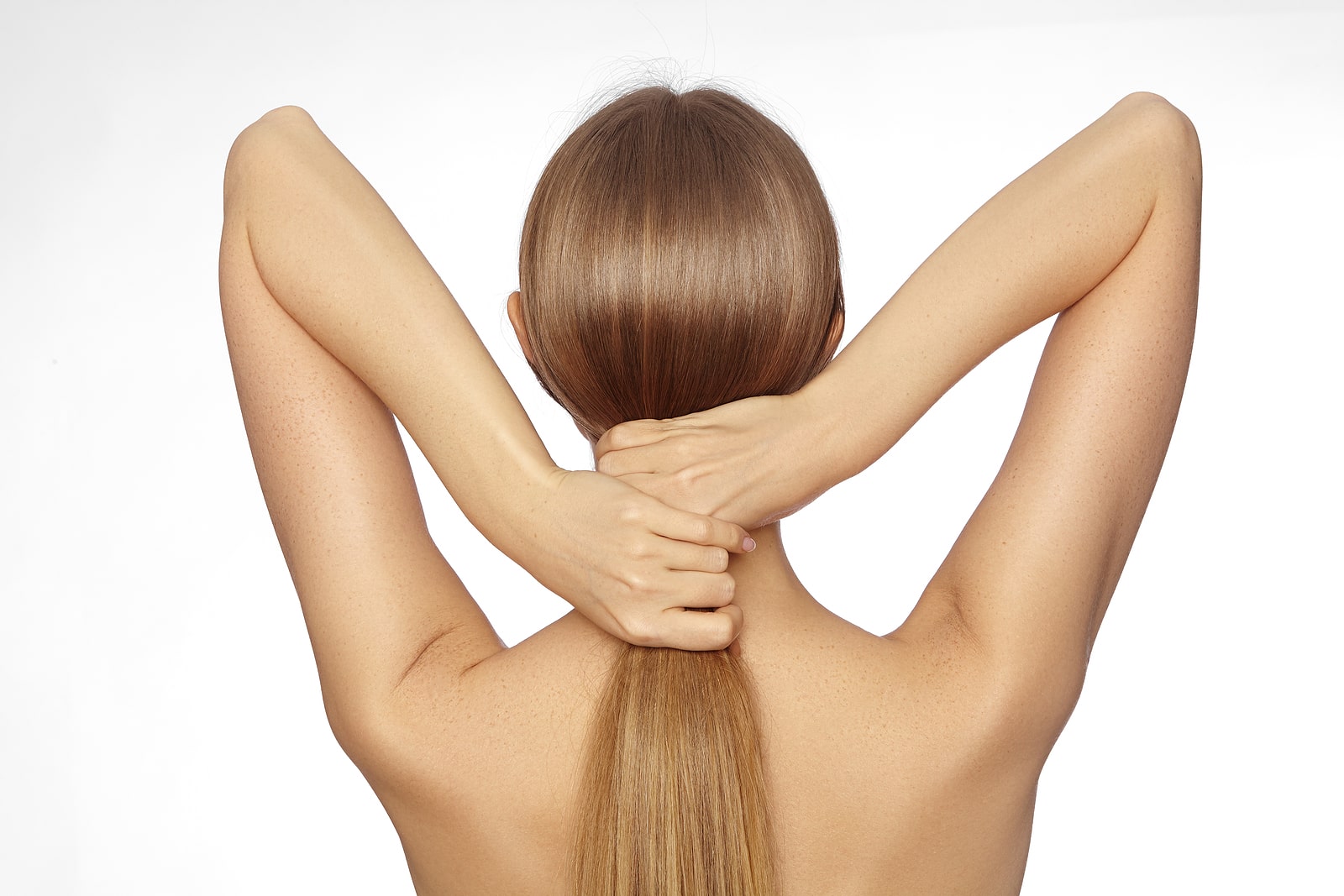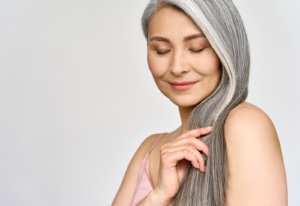Most people want strong, healthy hair. However, for some, it can be more difficult to achieve and to maintain. This can be due to a number of potential causes, some of which go beyond how you take care of your hair. There are many genetic factors that can cause issues with hair growth, as well as steps you can take to combat them. Read on for more on the science of healthy hair growth.
Hair Follicles
Most people are born with about 5 million hair follicles. About 1 million are on the head, while about 100,000 are on the scalp. Humans do not generate new hair follicles across the courses of their lives, so this is the most they will ever have. Density of scalp hair is reduced as people age because the scalp expands as a person grows. Hair follicles are the part of the hair strands that is within the scalp. The follicle is a tunnel-like segment of epidermis that extends into the dermis. It contains layers that all have different functions. At the base is the papilla, which contains capillaries, or tiny blood vessels, which provide nourishment for cells. Surrounding the papilla is the bulb. The cells within the bulb divide every 23 to 72 hours, which is a much faster rate than other cells in the body.
Sheaths
There are also inner and outer sheaths that surround the follicle. They both protect and form the growing hair shaft. The inner sheath follows the hair shaft and ends below the opening of the sebaceous gland, which is where the natural oils that keep hair healthy are generated. The outer sheath continues all the way to the gland. The erector pili muscle attaches below the gland to a fibrous layer around the outer sheath. When this muscle contracts, the hair stands up, which is how the sebaceous gland secretes oil.
Shafts
A hair shaft is made up of a protein called keratin and has three layers. The inner layer is called the medulla, the second layer is called the cortex, and the outer layer is the cuticle. The cuticle is made of shingles of overlapping cells and strengthens and protects the hair shaft, while the cortex and medulla hold hair pigment, which is what gives hair its color.
The Cycle of Healthy Hair Growth
Scalp hair grows about .3 to .4 mm per day, or about 6 inches per year. In fact, the only material in the human body that grows faster is bone marrow. Hair grows in cycles, so every hair follicle is active at a different time. There are three stages of healthy hair growth and shedding: anagen, catagen, and telogen.
Anagen
During anagen, the cells in hair bulbs are dividing rapidly and pushing hair up and out of the follicle. In this stage, hairs grow about one centimeter every 28 days. Hairs can stay in this active growth stage for up to six years. The length of the growth phase varies from person to person. For example, people with naturally shorter hair have a shorter anagen phase, while long hair indicates a longer growth period. Hairs on the arms, eyebrows, eyelashes, and legs have very short anagen phases, which is why they are so much shorter than scalp hairs.
Catagen
About 3% of all hairs are in the catagen phase at any given time. This is a transitional phase during which the bulbs at the base of the hair shaft hardens and attaches to the root of the hair shaft, causing a hard, white tissue to form called a club. Growth stops during this phase, and the outer root sheath shrinks. This usually lasts about 10 days.
Telogen
The telogen phase usually last for about 100 days. During this time, it is normal to lose about 25 to 100 hairs per day. Telogen is the resting phase of the hair cycle for the follicle. It remains inactive during this time. This is a natural part of the hair cycle when dead hair falls out to make way for new hair growth.
Impediments to Healthy Hair Growth
Four in ten people will experience hair loss at some point in life due to genetics. There are many potential causes for hereditary pattern baldness, which usually affects the hairline up to the middle of the top of the head. Men often experience hair loss starting at the temples or hairlines, while women’s genetic hair loss is more widespread and less obvious. According to Dr. John Kahan, if you are losing hair from the back of your head or in patches or clumps, it is likely not due to a hereditary factor, and you should consult a doctor.
Aging
Hair thinning is a natural part of life experienced by almost all people. In fact, by age 50, 85% of men have significantly thinner hair. 80% of women experience hair loss by age 60. If you are experiencing thinning hair due to age, you can try adjusting your diet to increase the amount of protein, zinc, biotin, vitamins C and A, iron, and omega-3 fatty acids you are consuming.
Medical Conditions
When the natural functioning of the thyroid is impaired, it can disrupt the production of thyroid hormones. This often leads to loss of hair due to the lack of production of hormones T3 and T4. Alopecia and other autoimmune diseases can also cause hair loss, as well as the drugs used to treat these conditions. If you are experiencing hair loss in tandem with a recent diagnosis or a new medication, talk to your doctor about exploring your options.
Hair Loss Solutions
While there is no single cure for natural hair loss, there are a few options you can explore to restore healthy hair growth:
- Hair transplant – If you are unhappy with the genetic hair loss you are experiencing, consider a hair transplant. This procedure involves a trained medical hair transplant specialist moving hair from the back or side of the head to the top. It is a minimally invasive procedure and has a fast recovery time.
- Human hair wigs or extensions – For a fast, easy way to improve the appearance of thinning hair, try a human hair wig or hair extensions. A hair replacement expert can help you choose the best option for your hair type, texture, length, and color.
- Laser rejuvenation – Low-level laser energy can be used to stimulate hair follicles and increase the blood supply to the scalp by 54% after just one treatment. Light energy is delivered from different angles to insure evenness and fullness. This is an FDA approved procedure that does not require surgery of any kind.
Contact Us
If you are experiencing hair loss and would like to speak to a hair restoration expert about your options, call Eldorado at 410-650-8086 today. We offer a range of safe, comprehensive hair replacement and restoration procedures and solutions at our Baltimore hair center. Contact us today to schedule a free hair analysis.





